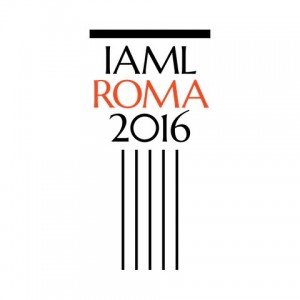11.00–12.30, 14.00–15.30 July 5th 2016
 Tutorial session on DOREMUS project (I) Presented by the Cataloguing Commission Chairs: Joseph Hafner (McGill University, Montréal), Rodolphe Bailly (Cité de la musique – Philharmonie de Paris, Paris) Speakers: Pierre Choffé (Bibliothèque nationale de France, Paris) Raphaël Troncy (Eurecom) Jean Delahousse (Ourouk) Rodolphe Bailly (Cité de la musique – Philharmonie de Paris) Music is everywhere. Files of recorded music are spread all over the web – stored, streamed, shared or sold. Yet, despite the fact that this knowledge is described in detail in the information systems of several cultural and media institutions around the world, nothing is harder today than finding the history of a musical piece, its composer, its cultural origins, its lyricists and influences, its covers and interpretations… DOREMUS is a semantic web project aiming to develop tools and methods to describe, publish, connect and contextualize music catalogues on the web of data. Its primary objective is to provide common knowledge models and shared multilingual controlled vocabularies. The data modeling Working Group relies on the cataloguing expertise of three major cultural institutions: Radio France, BnF (French national Library), and Philharmonie de Paris. FRBRoo was used as a starting point, for its flexibility and its a fine description of the concepts of Work and Event. The model was extended with classes and properties specific to musical data, and a set of shared multilingual vocabularies. The result shall enable a fine description of musical works in the fields of traditional and classical music: related musical or creation events, relations to authors, cultural background, interpretations, social functions, etc. This in‐depth tutorial will consist in the presentation of the Doremus model (an extension of the CIDOC‐CRM and FRBRoo models). We will get our hands dirty modeling a musical work and following the steps of modeling its expression, identification, performance, recording and publication. Along the way, we will describe our shared vocabularies: tonalities and genres, voices, instruments, arrangements, but also roles and responsibilities. We will also describe the alignment process.
Tutorial session on DOREMUS project (I) Presented by the Cataloguing Commission Chairs: Joseph Hafner (McGill University, Montréal), Rodolphe Bailly (Cité de la musique – Philharmonie de Paris, Paris) Speakers: Pierre Choffé (Bibliothèque nationale de France, Paris) Raphaël Troncy (Eurecom) Jean Delahousse (Ourouk) Rodolphe Bailly (Cité de la musique – Philharmonie de Paris) Music is everywhere. Files of recorded music are spread all over the web – stored, streamed, shared or sold. Yet, despite the fact that this knowledge is described in detail in the information systems of several cultural and media institutions around the world, nothing is harder today than finding the history of a musical piece, its composer, its cultural origins, its lyricists and influences, its covers and interpretations… DOREMUS is a semantic web project aiming to develop tools and methods to describe, publish, connect and contextualize music catalogues on the web of data. Its primary objective is to provide common knowledge models and shared multilingual controlled vocabularies. The data modeling Working Group relies on the cataloguing expertise of three major cultural institutions: Radio France, BnF (French national Library), and Philharmonie de Paris. FRBRoo was used as a starting point, for its flexibility and its a fine description of the concepts of Work and Event. The model was extended with classes and properties specific to musical data, and a set of shared multilingual vocabularies. The result shall enable a fine description of musical works in the fields of traditional and classical music: related musical or creation events, relations to authors, cultural background, interpretations, social functions, etc. This in‐depth tutorial will consist in the presentation of the Doremus model (an extension of the CIDOC‐CRM and FRBRoo models). We will get our hands dirty modeling a musical work and following the steps of modeling its expression, identification, performance, recording and publication. Along the way, we will describe our shared vocabularies: tonalities and genres, voices, instruments, arrangements, but also roles and responsibilities. We will also describe the alignment process.
